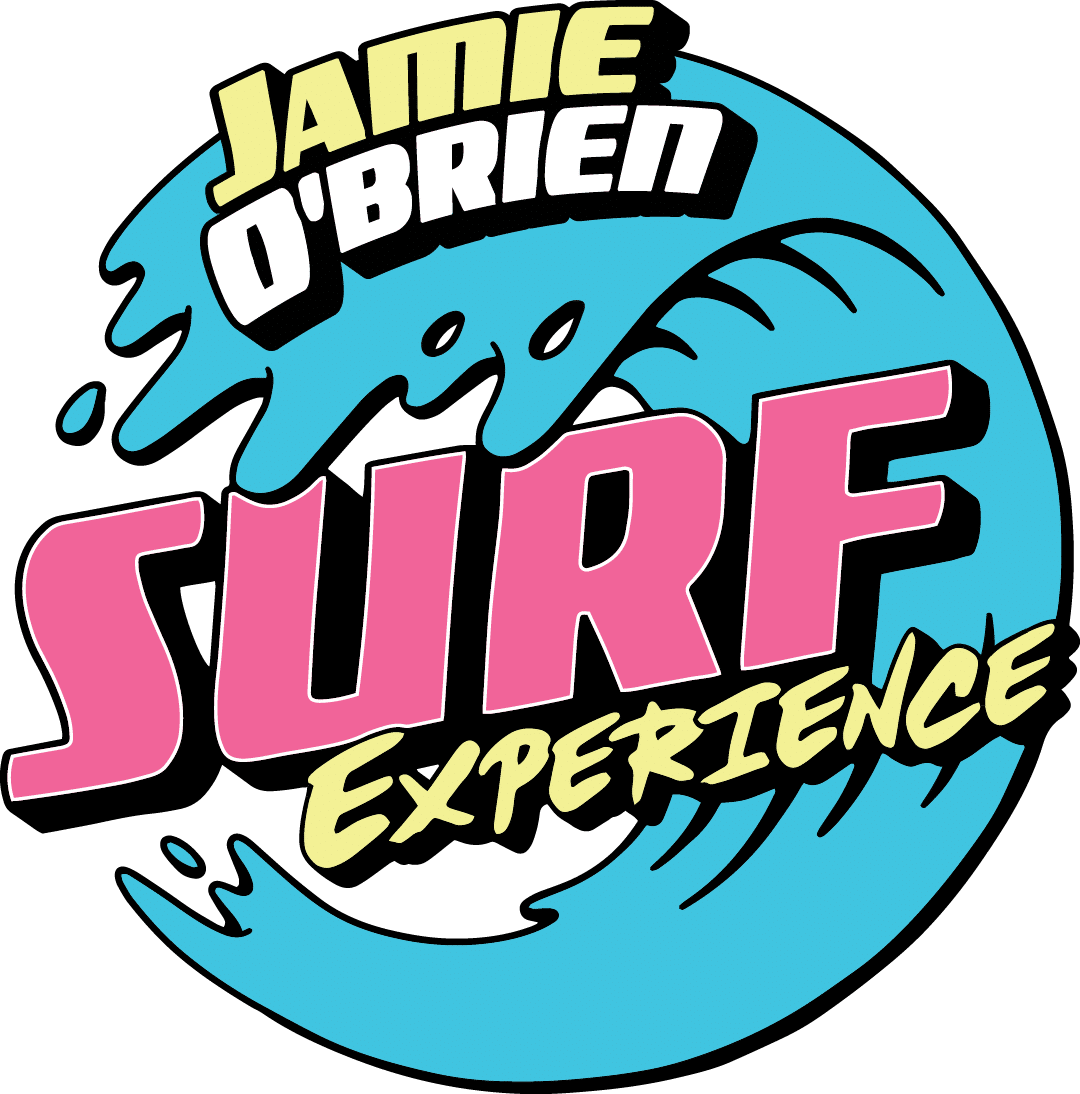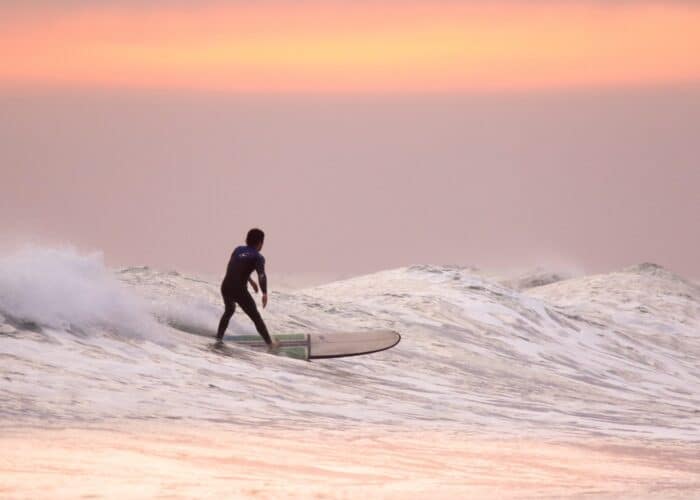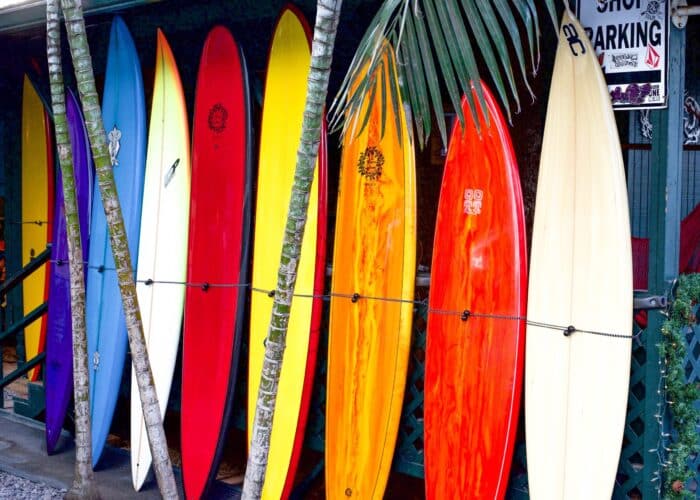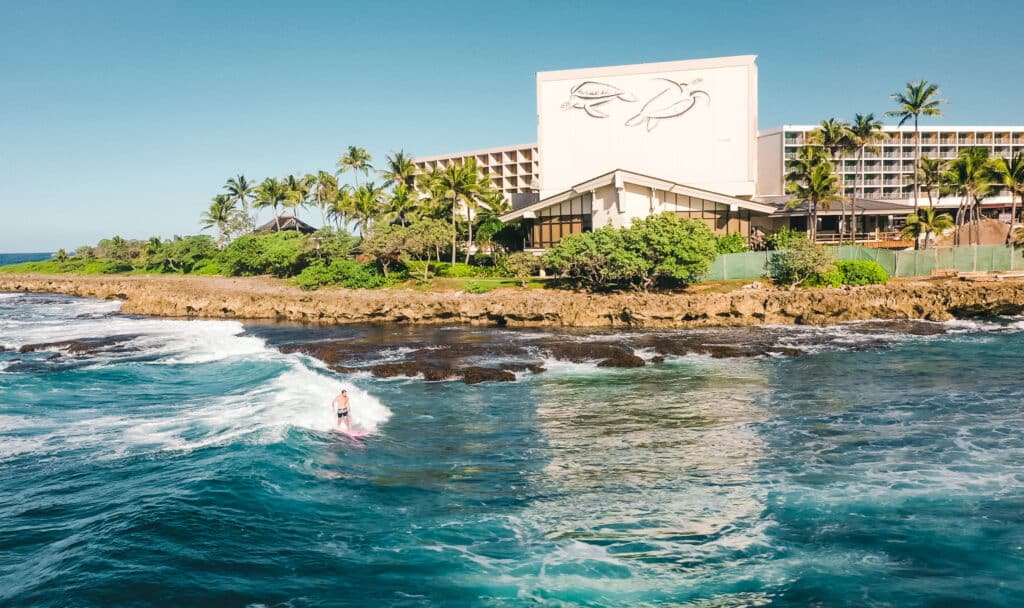
One of the reasons that surfing has such a gravitational pull on everyone who tries it is that no two waves are alike. Even if you’re surfing the same break every day in the same conditions, the waves you ride will all slightly differ from one another. If the dynamic nature of waves isn’t enough to keep surfing interesting, there’s also a seemingly endless number of ways to ride a wave. While each wave is different, surf breaks themselves can be boiled down to three parent categories: beach breaks, reef breaks, and point breaks. Each of these categories is determined by the ocean floor topography, which shapes incoming swells into breaking, rideable waves. Hawaii, and Oahu specifically, is home to more surf breaks than we can count, so it’s easy to find each wave type. While it depends on the location, generally, the type of wave you surf is dictated by your skill level. To find out more about different wave types and surf breaks, continue reading below for Our Oahu Surf School’s Guide to Understanding Different Surf Breaks and Wave Types.
Beach Breaks
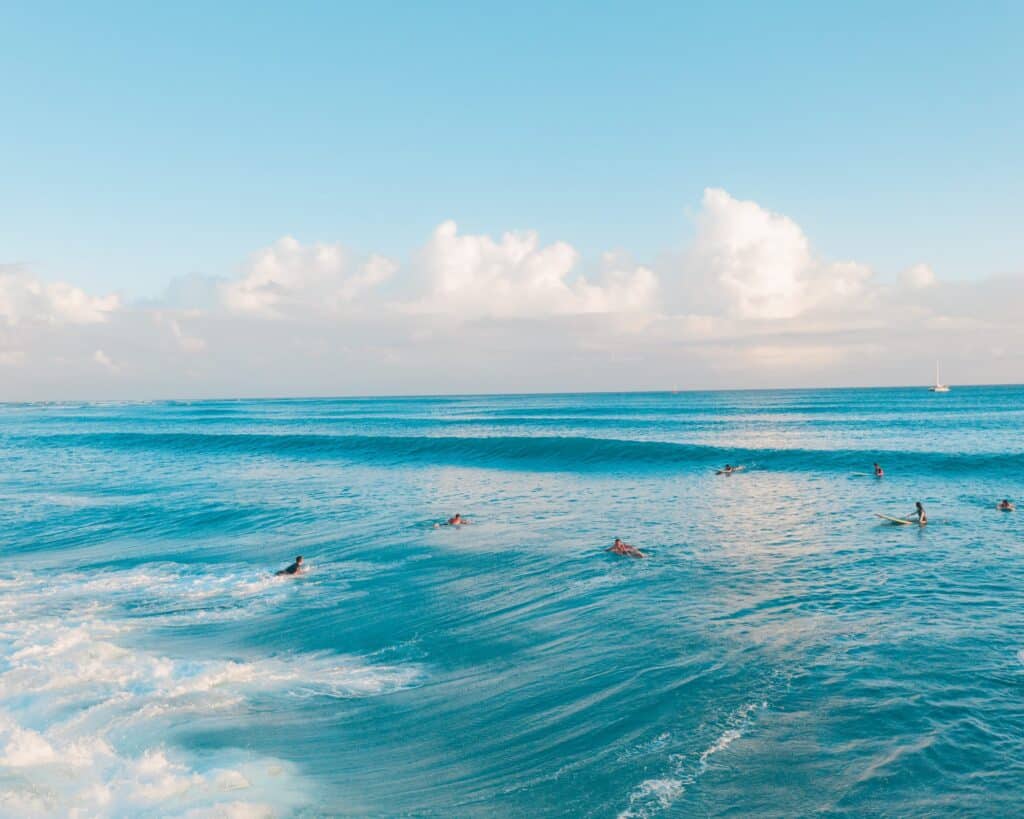
A beach break is a surf break where waves break over sand rather than rocks or reef. Swell and weather patterns cause loose sand to build into sand bars on the ocean floor. These sand bars can either feature a gradual or sudden depth change. If the change in depth of the ocean floor is gradual, the wave will be soft, slopping, and ideal for learning. If the change in ocean floor depth is sudden, the resulting wave will likely be steep and hollow, which is better suited for advanced surfers. The coaches at our Oahu surf school will always start students out on slow rolling, soft waves that are ideal for learning and progression. If you’re an advanced surfer, the North Shore of Oahu is home to the world’s most acclaimed waves, which are all located in a seven-mile stretch known as the Seven Mile Miracle.
Reef Breaks
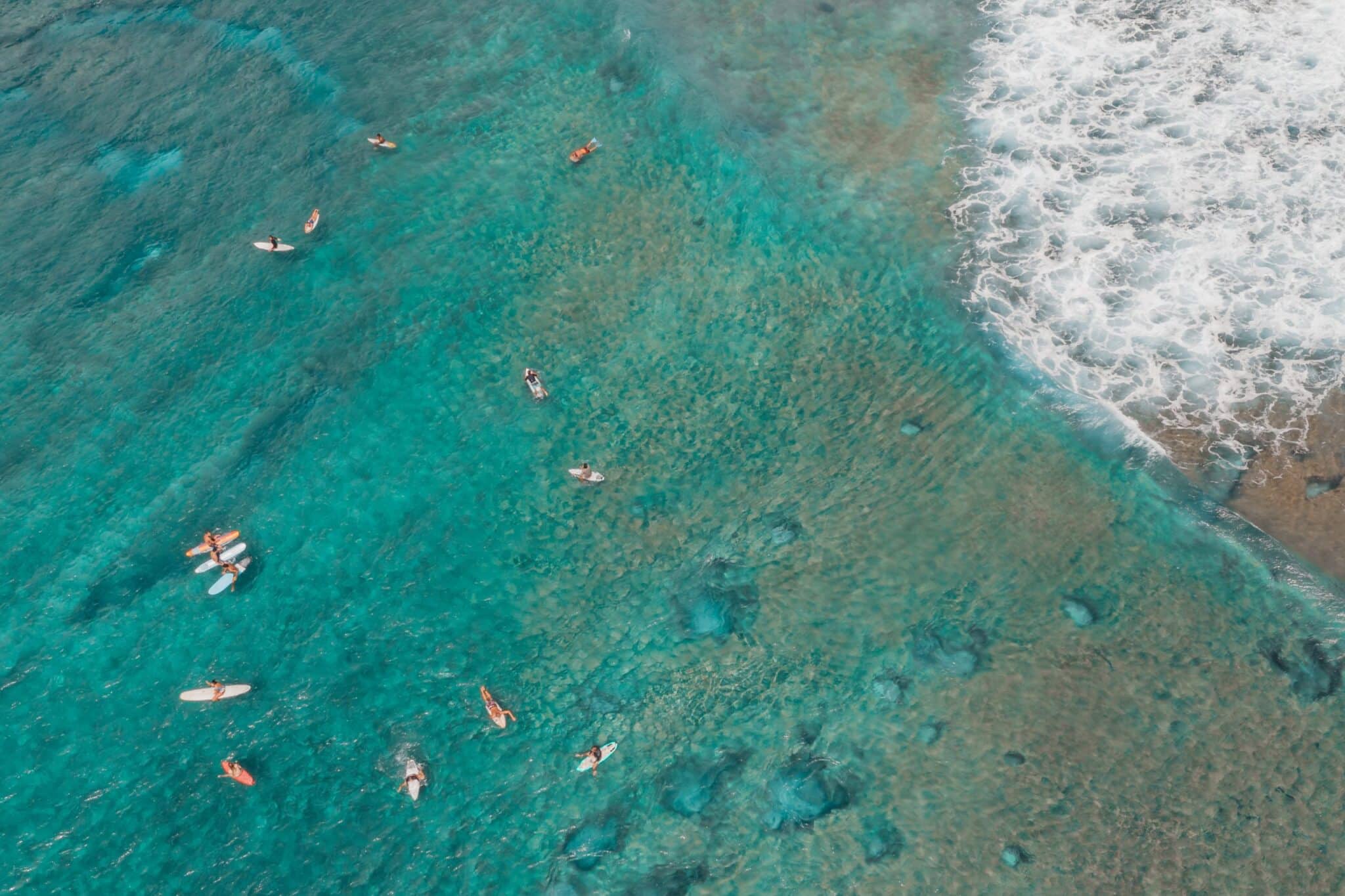
Unlike beach breaks, reef breaks break over reef or rock. Reef breaks are often preferred to beach breaks by experienced surfers because of their consistency. Sand bars shift constantly and can be washed out with heavy swells or rain, but reefs are static. So, while no two waves are alike, waves at reef breaks are all relatively similar. Reef breaks, however, do pose a threat to inexperienced surfers. Reef is harder than sand and can often be sharp, so new surfers should only surf reef breaks with a professional surf guide or coach, like our expert North Shore Surf coaches at the Jamie O’Brien Surf Experience. The North Shore of Oahu is home to the world’s most celebrated reef break, Pipeline. While Pipe may look appealing, it is perhaps the most dangerous wave in the world. Not all reef breaks are as menacing as Pipe, many in Hawaii are beginner-friendly.
Point Breaks
Point breaks are created by protruding landmasses that cause waves to bend and wrap around the point and peel in a direction parallel to the beach. Point breaks are often preferred by surfers who look for longer rides and carvable walls. Point breaks can break over either sand, rock, or reef. Unlike reef or beach breaks, point breaks aren’t defined by the ocean floor makeup but by the topographical shape of the break. Point breaks can be great for progression because they offer surfers long rides and plenty of sections to work on turns.
Each unique surf break creates an equally unique wave type. Waves are defined by their physical characteristics, like hollow, fat, slabby, or mushy. While the wave type can change at a surf break given the wind and swell conditions, the type of surf break remains constant. In Hawaii, near our Oahu surf school, we’re lucky enough to be surrounded by a variety of waves that cater to all levels of surfers. So, whether you’re a first-time surfer looking to participate in our Oahu surf lessons or an experienced surfer searching for the best surf guides on the island, the Jamie O’Brien Surf Experience will ensure you have the time of your life in the water.
